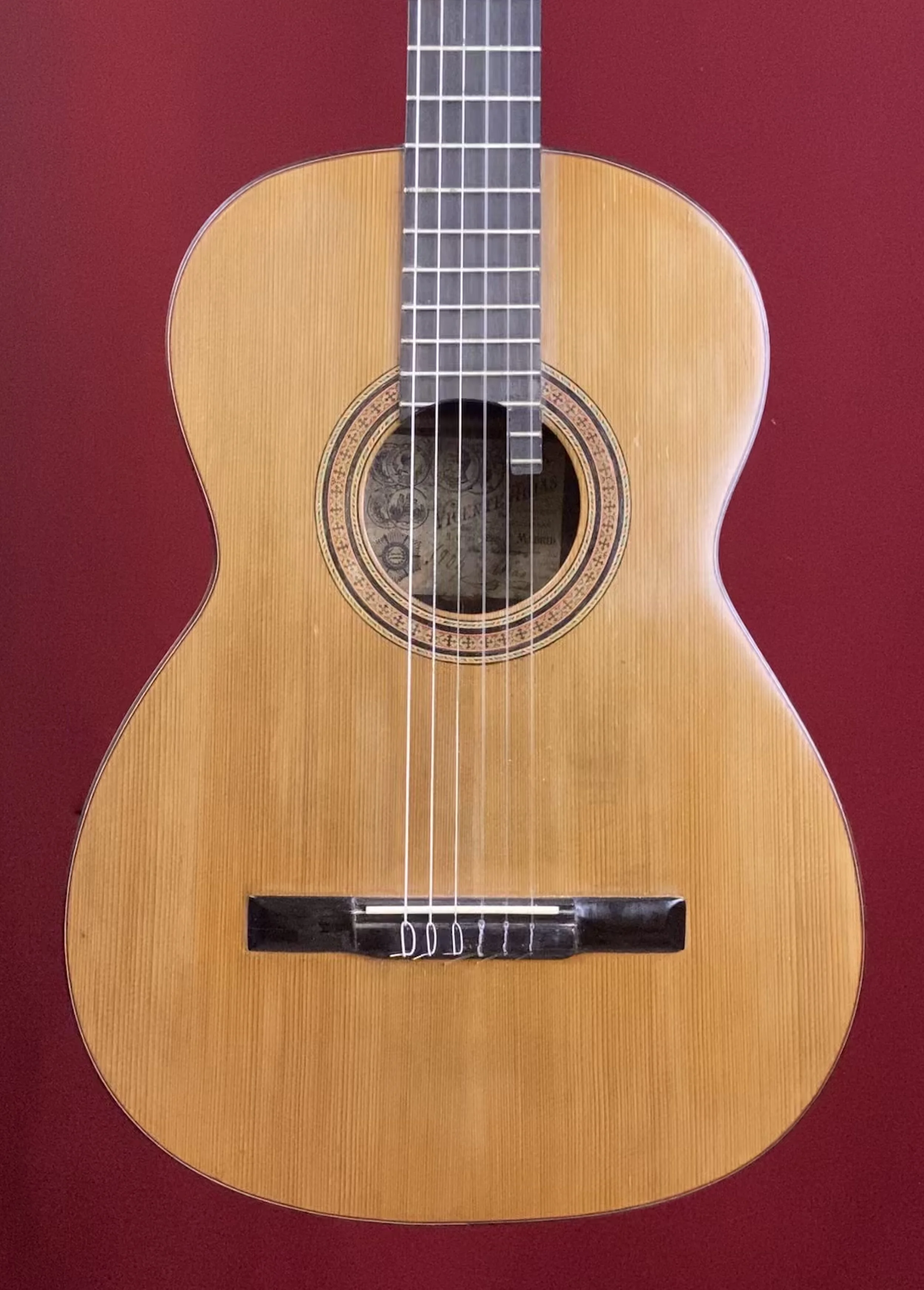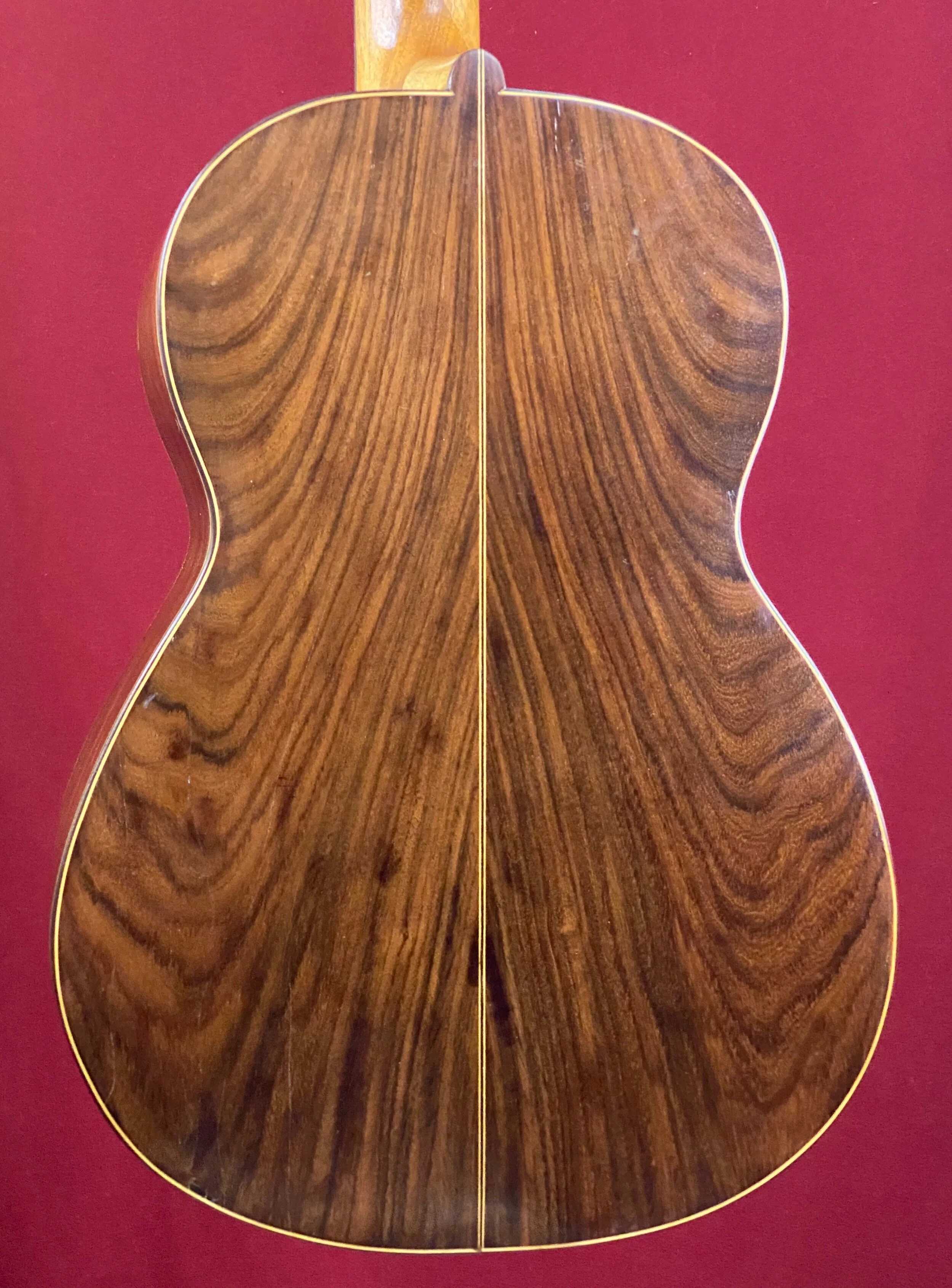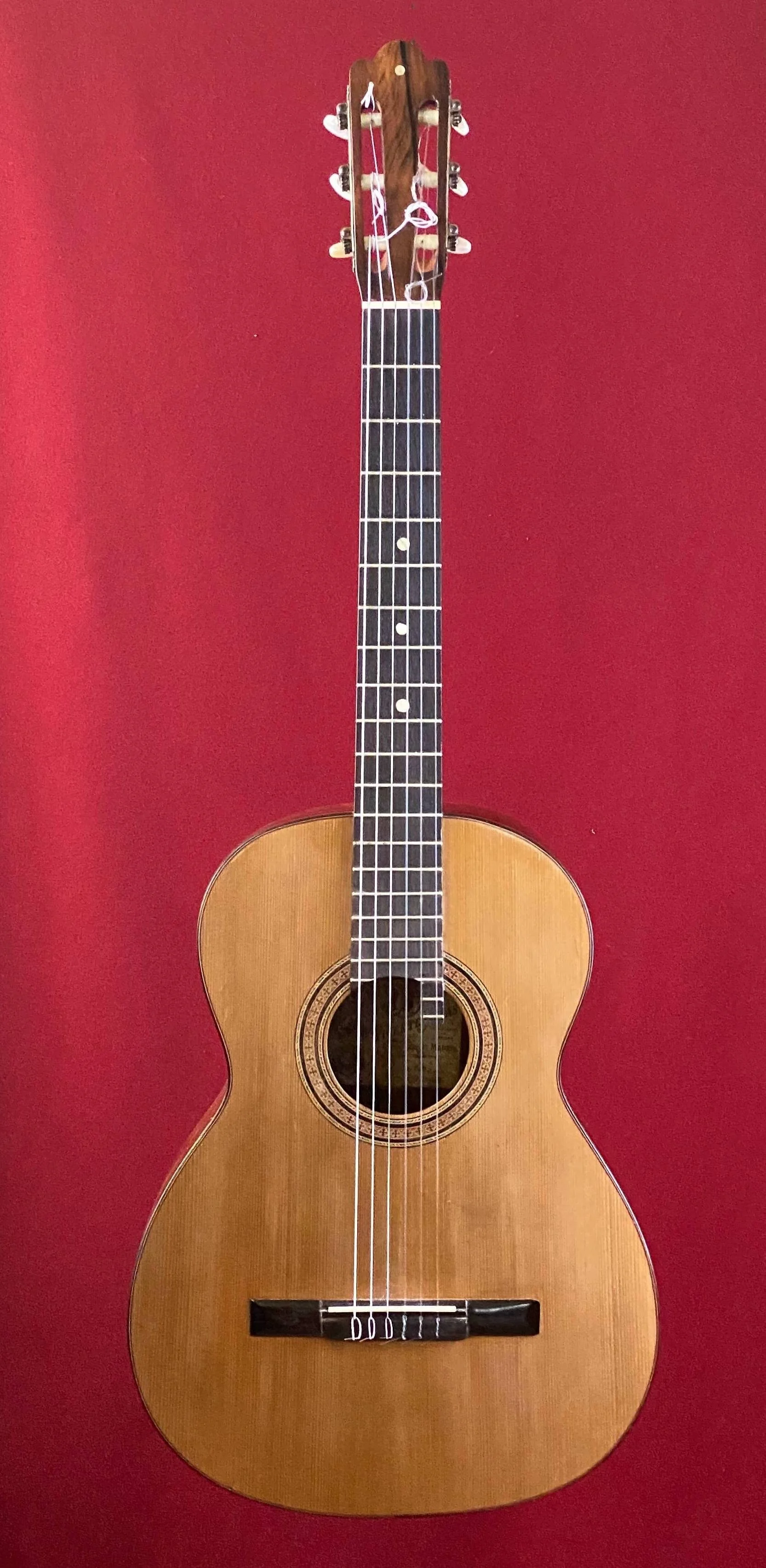1904 Vicente Arias Classical Guitar
1904 Vicente Arias Classical Guitar
Make: Vicente Arias
Model: Concert Classical Guitar
Model Year: 1904
Top: German Spruce
Back & Sides: Kingwood
Fingerboard: Ebony
Scale: 650
Nut: 50mm
Finish: French Polish
Tuners: Original
Upper bout; 260mm
Waist: 220mm
Lower bout: 355mm
Body length: 470mm
Depth at neck: 87mm
Depth at tail: 94mm
Sound hole: 84mm
Weight: 1155 gm
Country: Spain
Condition: Used - Excellent
Location: Tucson
Vicente Arias, born in Alcázar de San Juan, Ciudad Real, in 1833, holds a distinguished place in the history of 19th-century luthiery. Often compared to the legendary Antonio de Torres, Arias was celebrated for his elegant designs and exceptional craftsmanship. He began his guitar-making journey around 1860, quickly earning a reputation for the quality and artistry of his work.
A fascinating anecdote, shared by Emilio Pujol, highlights Arias's creativity and his connection with the renowned guitarist Francisco Tárrega. In the late 1870s, Tárrega commissioned Arias to create a compact guitar that could be concealed beneath his cape, allowing him to strengthen his fingers discreetly while traveling. This unique project underscores Arias's ingenuity and his ability to adapt to the needs of his clients.
Throughout his career, Arias operated from various workshops. In 1889, he was based at Paloma 12 in Ciudad Real, moving to Paloma 14 by 1898. By 1903, Arias had relocated to Madrid, where he established his workshop at Álamo 3. Over the years, he worked at several other locations, including Calle Santa Isabel 20 and Álamo 10, where he remained until his death in 1914.
The guitar in question underwent a restoration, likely in the 1950s, by Andrés Martín, a respected luthier in Madrid. While the details of the restoration remain somewhat unclear, it is evident that Martín's work helped preserve the instrument's historical and musical significance. These factors—Arias's enduring legacy, his collaborations with iconic figures like Tárrega, and the guitar's restoration history—have all been carefully considered in determining its value. This remarkable guitar stands as a testament to Vicente Arias's artistry and his lasting impact on the world of guitar making.








